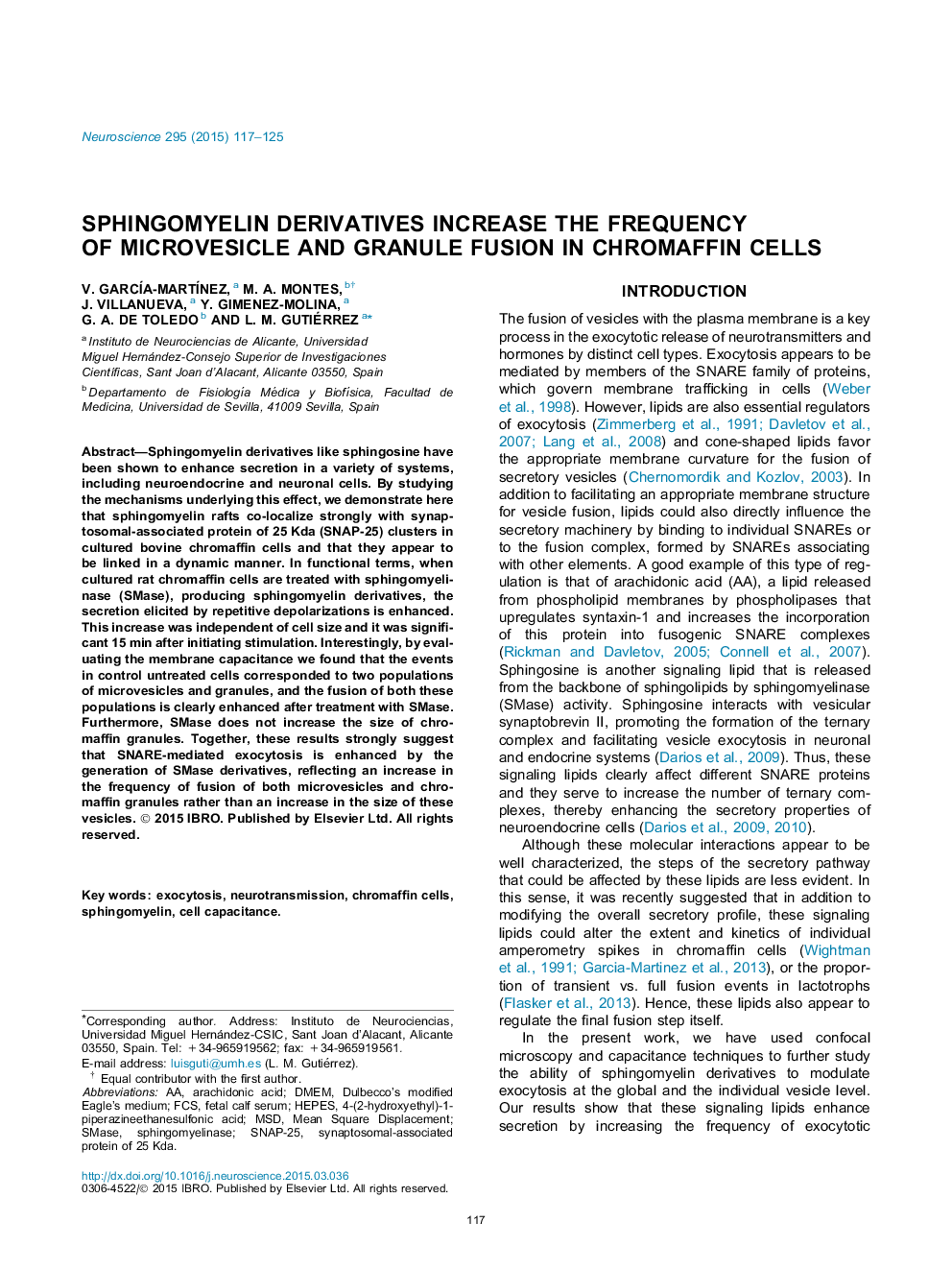| کد مقاله | کد نشریه | سال انتشار | مقاله انگلیسی | نسخه تمام متن |
|---|---|---|---|---|
| 6272449 | 1614781 | 2015 | 9 صفحه PDF | دانلود رایگان |

- Sphingomyelin rafts co-localized with SNAP-25 clusters in chromaffin cells.
- SMase treatment results in the enhancement of depolarization-evoked secretion.
- Frequency of microvesicle and chromaffin granule fusions increases after SMase treatment.
- Chromaffin granule size studied by EM is not modified by SMase treatment.
Sphingomyelin derivatives like sphingosine have been shown to enhance secretion in a variety of systems, including neuroendocrine and neuronal cells. By studying the mechanisms underlying this effect, we demonstrate here that sphingomyelin rafts co-localize strongly with synaptosomal-associated protein of 25Â Kda (SNAP-25) clusters in cultured bovine chromaffin cells and that they appear to be linked in a dynamic manner. In functional terms, when cultured rat chromaffin cells are treated with sphingomyelinase (SMase), producing sphingomyelin derivatives, the secretion elicited by repetitive depolarizations is enhanced. This increase was independent of cell size and it was significant 15Â min after initiating stimulation. Interestingly, by evaluating the membrane capacitance we found that the events in control untreated cells corresponded to two populations of microvesicles and granules, and the fusion of both these populations is clearly enhanced after treatment with SMase. Furthermore, SMase does not increase the size of chromaffin granules. Together, these results strongly suggest that SNARE-mediated exocytosis is enhanced by the generation of SMase derivatives, reflecting an increase in the frequency of fusion of both microvesicles and chromaffin granules rather than an increase in the size of these vesicles.
206
Journal: Neuroscience - Volume 295, 4 June 2015, Pages 117-125